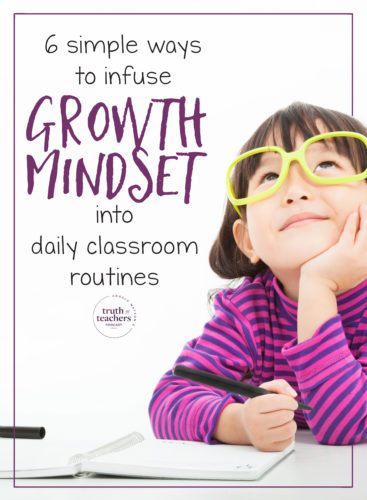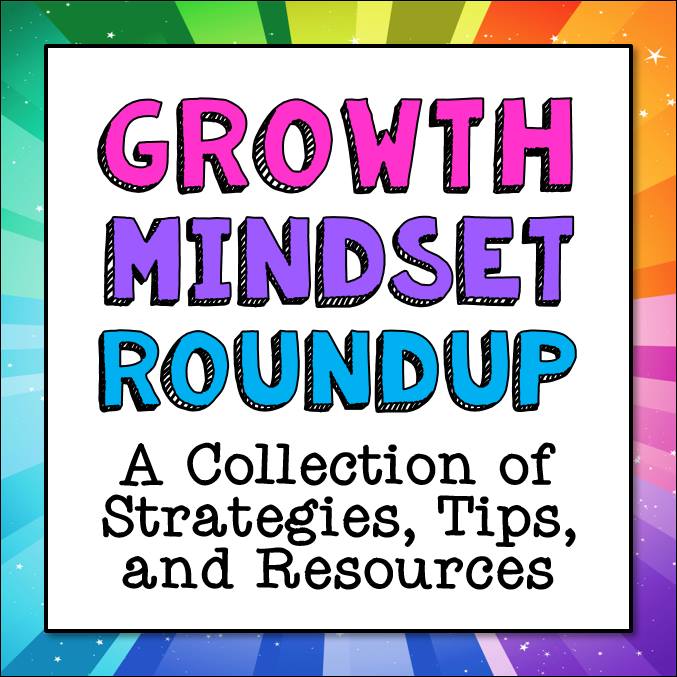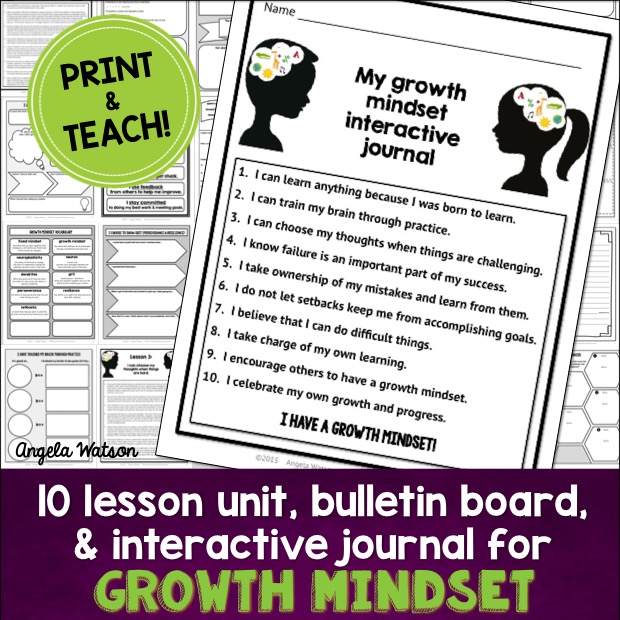This week on the Truth for Teachers podcast: 6 simple ways to promote growth mindset in the classroom through daily routines.
Growth mindset has been a buzzword in education for quite awhile and I think a lot of teachers and kids are already familiar with it. But I’ve noticed a pitfall that seems to occur fairly often.
Growth mindset is introduced to students near the beginning of the year and then the curriculum demands seem to take precedent. When you have so many skills you have to teach and so many standards for kids to master, it’s hard to remember, much less make time to talk about growth mindset.
Fortunately, there are some simple ways you can infuse growth mindset into what you do on a daily basis. These are regular practices that help you ensure students will:
- Be willing to try new things
- Stick with hard tasks and not give up
- Push themselves to do their best work, not just what’s “good enough”
- Believe in themselves and their own ability to learn
All of these traits are things we can help develop in our students by teaching them about how their brains work.
You see, many students enter our classrooms believing they’re either smart or not smart, good at reading or math, or not good in those areas. This belief that our basic qualities like intelligence and talents can’t be changed is called a fixed mindset. Often our students figure: Why bother trying at something that’s hard for me? I’m not naturally good at it and I can’t really do anything about that.
Our students may not realize that their brains have the ability to change and grow through their experiences (neuroplasticity). Students need us to teach them that the human brain is like a muscle that can be trained through repetition and practice. When students realize this, they develop a growth mindset: the belief that abilities can be developed through commitment and hard work.
And once they have a growth mindset, they can learn anything.
Because a growth mindset is a way of thinking, it’s important for students to have continual reinforcement of that mindset. And infusing growth mindset mentions and practices into your daily routines is one of the simplest ways to do it.
Here are 6 simple ways to help students re-train their brains to overcome a fixed mindset and default naturally to growth mindset-oriented thinking patterns.

Want to listen instead of read?
Listen to episode 107 below,
or subscribe in your podcast app.
1. Introduce learning activities by explaining how they are designed to benefit kids’ brains.
For example, when you teach students how to do collaborative learning activities, tell them that talking about what they’ve learned helps them own and process the information better, and grows more dendrites.
When you teach water fountain procedures, let kids know that their brains need hydration in order to function well, and remind students of the benefits of drinking water.
2. When kids make mistakes, respond in casual ways that help them rebound.
When we overreact to mistakes or get frustrated with students’ inability to internalize classroom routines, we undermine our message that learning is a process and failure is a natural part of that process.
Make it your goal to respond to students’ mistakes with patience and nonchalance. Remind students: Each time you practice this routine, your brain is getting stronger and it will be easier for you to do it the next time.
When kids forget what to do, let your tone and facial expression communicate: Mistakes don’t upset me. We can fix this, and fixing it together will make us both smarter.
3. Get student input on creating helpful classroom displays that reinforce learning.
You don’t have to start the school year with a perfectly decorated classroom — leave space for students to create and suggest displays! Throughout the year, ask questions to find out what students would like to have as a reference in the classroom to help them maintain a growth mindset and take ownership of their learning.
Would students like to make an anchor chart with strategies they can use when they get stuck?
Do they want to display growth mindset vocabulary words and definitions so they can try to use them in their conversations?
Or maybe they’d like to display some of their reflections about or strategies for learning to help other kids in the class?
4. Use specific feedback and helpful vocabulary that guides students to identify how they achieved success.
We give tons of positive feedback and praise as students first start learning new skills and expectations, but we don’t always point out the character traits students demonstrated in order to experience that success. Integrate growth mindset vocabulary into your daily routines and continually point out when students demonstrate those qualities.
You might say, “This was hard for you, but you persevered and now, you’ve almost got it!” or “You had a setback when your strategy didn’t work, but you found resources to help you. You showed a lot of resilience and it paid off!”
You may even want to end the school day on a daily basis by having students turn and share ways they have shown grit that day (or struggled to show grit and brainstorm strategies for doing better tomorrow.)
5. Model growth mindset so kids can see it in action on a daily basis.
Show students how to respond constructively to setbacks and failures. Let kids see how you brainstorm solutions and different strategies to try when a piece of technology doesn’t work, you can’t find something you need, or a surprise fire drill prevents kids from finishing a task.
Allow students to see that you are willing to learn and try new things, even when they are hard for you, and be honest when you try things in the classroom that are out of your comfort zone. Let students see that learning new things, taking on challenges, and rebounding after making mistakes are all a natural part of life and help train your brain to grow stronger over time.
6. Start formally teaching kids about growth mindset / neuroplasticity through books, apps, and other resources.
Two of the best children’s books on growth mindset are Your Fantastic Elastic Brain by Dr. JoAnn Deak and Making a Splash: A Growth Mindset Children’s Book by Carol E. Reiley. I also like the free online brain songs provided by the University of Washington.
If you want more structured support, I’ve created a complete 10 lesson unit with teacher’s guide, bulletin board set, printable posters, and a 20 page interactive student journal to provide everything you need for teaching your students about growth mindset.
It’s been a top seller on TeachersPayTeachers for quite awhile now and has been used in classrooms all over the country. It’s designed for grades 3-6, but I’ve heard from 2nd-9th grade teachers whose kids have loved it. This unit is highly flexible and can be taught in any timeframe you’d like.
Once you print the materials, your prep work is done and the teacher’s guide walks you step-by-step through each activity. However, the tasks are open-ended and adaptable so you can be responsive to your students’ needs and adjust things easily as you go.

Want to learn more? Check out this Growth Mindset Roundup: A Collection of Tips, Strategies, and Resources. Each blogger is sharing more helpful ideas.
This post is based on an episode from my weekly podcast, Angela Watson’s Truth for Teachers. A podcast is like a free talk radio show you can listen to online, or download and take with you wherever you go. I release a new 15-20 minute episode each Sunday and feature it here on the blog to help you get energized and motivated for the week ahead.
See blog posts/transcripts for all episodes
The Truth for Teachers Podcast
Our weekly audio podcast is one of the top K-12 broadcasts in the world, featuring our writers collective and tons of practical, energizing ideas. Support our work by subscribing in your favorite podcast app–everything is free!
Explore all podcast episodes
Angela Watson
Founder and Writer
Sign up to get new Truth for Teachers articles in your inbox
Discussion
Leave a Reply
OR

Join our
community
of educators
If you are a teacher who is interested in contributing to the Truth for Teachers website, please click here for more information.




















I think this is such a great thing to practice with students! I often see students get discouraged because they make a mistake and then think they’re not smart enough to solve the problem and then they don’t want to try again. Growing their mindset by working on mistakes with them or telling them mistakes aren’t bad and that they don’t upset you as a teacher is a great idea! I hope that as a teacher I will be able to model growth mindset for my students so that they are more willing to try new things and to not become discouraged easily.